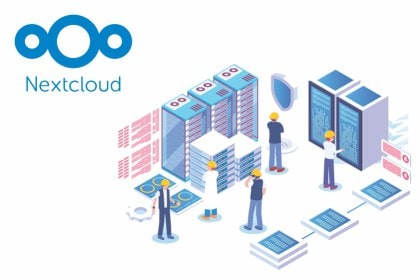
In this situation, effective mail server protection is crucial for the overall protection of all sensitive correspondence data. Today we’re going to take a look at some of the best methods to help protect your email server from viruses and spam.
Fighting phishing
Phishing is a type of fraud in which attackers try to fraudulently obtain confidential information, such as passwords, bank card numbers, or other personal data. It usually happens through fake emails, websites, or messages that look like official ones.
Remember the importance of using a variety of solutions to combat phishing and malware. This can be a special tool for scanning incoming mail with attachments in real time, as well as removing absolutely any threats before they have time to cause any damage to a particular device.
To protect your email servers from various phishing attacks that are so popular among attackers today, you should take a number of preventive steps:
- Analyze links in emails. Use tools that check the links in emails for their reputation and correspondence to real domains. This will help identify fake links that lead to malicious sites.
- Two-factor authentication (2FA) Ensure account security with two-factor authentication. Even if the user’s credentials are stolen, attackers will not be able to access the system without the second factor.
- Isolate suspicious attachments Automatically isolate or run suspicious attachments in a sandbox to check their security.
- Content filtering Use content filtering systems that can block suspicious words, phrases, or patterns that are commonly found in phishing emails.
- Monitor abnormal activity Implement systems to monitor abnormal user activity, such as frequent login attempts, access from unusual locations, or bulk emails.
- Feedback from users. Create a system that allows employees or users to quickly report suspicious emails. This will help you respond quickly to potential threats.
- Simulate phishing attacks. Conduct training sessions using a phishing attack simulation. This will help users better recognize threats and minimize risks.
- Update and audit antivirus solutions. Ensure that antivirus software and anti-spam filters on email servers are regularly updated and meet the latest security standards.
- Use DNSSEC. Enable DNSSEC to protect your domain’s DNS records from spoofing and prevent redirects to fake sites.
- Limit authorizations. Make sure that system users have the minimum required access rights. This will help reduce the risk of losing critical information in case of account compromise.
- Regular auditing and testing. Conduct regular checks of your mail server configuration to make sure there are no weaknesses or vulnerabilities.
- Blocking geographic zones. If your organization operates only in certain regions, block access to mail servers from other countries where attacks are common.
- Training on “safe clicks”. Inform users to check the sender’s address, suspicious links, grammatical errors, and unexpected attachments.
By detecting and neutralizing malware, you can eventually not worry about confidential information, as it will be completely safe, including your entire system.
Fighting spam
The following approaches are effective in the fight against spam:
- Sender authentication
- SPF (Sender Policy Framework): Allows you to specify which servers are authorized to send emails on behalf of your domain.
- DKIM (DomainKeys Identified Mail): Adds a digital signature to emails to confirm that they have not been altered in transit.
- DMARC (Domain-based Message Authentication, Reporting, and Conformance): Lets you tell policies how to handle emails that don’t pass SPF or DKIM.
- Greylisting. A method of temporarily rejecting emails from unknown senders. Most legitimate servers resend the email after a few minutes, while spammers often do not.
- RBL (Real-time Blackhole List). The use of blacklists of IP addresses from which spam is often sent. Such lists are updated regularly and help block malicious traffic.
- Rate Limiting. Set a limit on the number of emails that can be sent from a single IP or mailbox in a certain period of time.
- Analyze behavioral patterns. Modern anti-spam systems analyze the behavior of senders and the content of emails to detect anomalies that are typical of spam. One of the most popular services for automatic analysis of emails based on a variety of criteria is SpamAssassin.
- Botnet protection. Use systems that detect infected devices that can be used by botnets to send spam. This is especially important for corporate networks.
- User training. Inform employees or users about the signs of spam, phishing, and malicious emails. This will reduce the risk of accidentally opening suspicious attachments or links.
- Use modern solutions based on machine learning. Integrate tools that use artificial intelligence algorithms to detect new types of spam.
- Relay only to trusted IPs. Limit the use of SMTP relays to authenticated users and trusted IP addresses only.
- Separate email traffic. Split outgoing and incoming emails to different servers or ports. This reduces the risk of blocking all email traffic if spam is detected.
- Maintain IP address and domain reputation. Regularly check the reputation of your mail server in online tools and avoid actions that can lead to its blacklisting.
These methods, combined with regular configuration and updating of anti-spam tools, will ensure higher efficiency in the fight against unwanted email.
Firewall.
To protect your mail server from viruses and spam, you shouldn’t neglect configuring your firewall, as it is an important part of your overall security. Set up strict access rules, allowing only the necessary ports to work with mail:
- IMAP: port 143 (or 993 for a secure connection)
- POP3: port 110 (or 995 for a secure connection)
- SMTP: port 25 (for sending mail by servers), port 587 (for sending mail by clients with authentication) and port 465 (for a secure connection).
This approach will limit the ability to connect only to mail services, which will significantly improve server security.
Passwords.
Securing a mail server is a process that requires a planned, multifaceted, and unhurried approach. To begin with, you will need to take care of implementing the basic and advanced settings required, covering everything from passwords to the specification on the server side. Thanks to these strategies, it will be possible to significantly reduce the possible risk of any data leakage or cyberattacks.
Considering in detail the most popular and mandatory ways to strengthen the security of any mail server, of course, the first thing that should be mentioned is the need to implement a strict policy of mandatory passwords. Experts advise starting with the basics. You can have a highly secure and state-of-the-art mail server, but if its passwords are weak, information and messages can still fall into the hands of intruders at any time.
To strengthen overall security, it is necessary to introduce the strictest rules of good password complexity, in particular, we are now talking about lowercase numbers, uppercase letters and special characters. Be sure to set a certain password length and keep track of periodically changing the old password to a new one that is no less secure. This is one of the best and proven practices.
Next, you’ll need to enable 2FA, or more simply, two-factor authentication. This security measure will necessarily require the user to provide two authentication factors to verify themselves. For example, it can be a combination of what the user knows and what they are (a fingerprint or other biometric element).
Certificates.
When trying to protect your mail server from viruses and spam, don’t forget about the need to use SSL/TSL encryption for data transmission. These are special cryptographic protocols that provide good security for any mail server by encrypting data during transmission. In this situation, you don’t even have to worry, because even if an attacker can intercept any data, he or she will definitely not be able to decrypt it.
A little tip: in order to protect against unwanted access to any information with data, use the latest versions of SSL/TSL. To do this, you can first protect the server using an SSL certificate, and then obtain a special S/MINE certificate for further protection of corporate mail and, of course, personal email. By the way, S/MINE certificates are responsible for the successful protection of emails with the help of a digitally signed encryption guarantee. At the same time, they guarantee
- complete confidentiality;
- 100% integrity;
- and authenticity of incoming/outgoing emails.
Do you want to learn more about protecting your email server from viruses and spam? Are you interested in implementing DMARC, as well as conducting regular security audits and training users on email security? In this case, you should definitely consult with a specialist who has experience in this area.
If you want to protect your emails from intruders. If you want to keep any confidential documents from prying eyes, then you should take this issue as seriously as possible, without ignoring anything.
Be reasonable and remember that security is not only the key to protecting your data, it is above all the integrity of the entire modern digital ecosystem.



